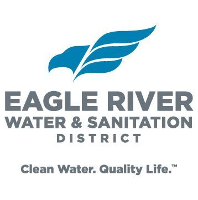Beer made from bath and laundry water hits shelves: eww or brew? – New York Post

Report on Epic Cleantec’s Water Recycling Initiative and its Alignment with Sustainable Development Goals
Introduction: An Innovative Approach to Water Management
The San Francisco-based cleantech firm, Epic Cleantec, has launched a novel initiative to produce craft beer using purified graywater from residential buildings. This project serves as a practical demonstration of advanced water recycling technology and aims to shift public perception regarding water reuse. The initiative directly supports several key United Nations Sustainable Development Goals (SDGs), particularly those related to water, sustainable cities, and responsible consumption.
Direct Contribution to SDG 6: Clean Water and Sanitation
The core of Epic Cleantec’s work is the on-site purification of wastewater, a critical component in achieving SDG 6, which aims to ensure the availability and sustainable management of water and sanitation for all. The project contributes by:
- Increasing Water Recycling (Target 6.3): The technology captures and treats graywater from showers and laundry, significantly increasing the rate of water recycling and reuse within urban environments.
- Improving Water-Use Efficiency (Target 6.4): By creating a circular water economy within buildings, the system reduces the demand on municipal freshwater supplies, thereby improving overall water-use efficiency.
- Demonstrating High-Quality Water Purification: The company asserts that the purified water’s quality is superior to that of standard tap water in many U.S. cities, showcasing the potential of technology to provide safe, clean water from unconventional sources.
Advancing SDG 11 and SDG 12: Sustainable Cities and Responsible Consumption
This initiative provides a tangible model for sustainable urban living and responsible production, aligning with the objectives of SDG 11 (Sustainable Cities and Communities) and SDG 12 (Responsible Consumption and Production).
- Building Resilient Urban Infrastructure (Target 11.6): By decentralizing water treatment, the system reduces the environmental impact of cities by lessening the burden on centralized water and wastewater infrastructure.
- Promoting a Circular Economy (Target 12.2): The project transforms wastewater from a liability into a valuable resource, embodying the principles of sustainable management and efficient use of natural resources.
- Fostering Sustainable Practices (Target 12.5): The production of beer from recycled water serves as a high-profile educational tool to reduce waste generation and encourage public acceptance of recycled products, a key aspect of sustainable consumption.
Product Details and Market Strategy
The initiative has resulted in the creation of two distinct beverage products to showcase the purified water’s quality and safety.
Product Line
- Shower Hour IPA: A classic India Pale Ale.
- Laundry Club Kölsch: A light golden ale.
Strategic Partnership and Distribution
To bring this concept to market, Epic Cleantec has partnered with Devil’s Canyon Brewing Company. The strategic plan includes:
- Production Scale: A planned output of 250,000 cans in the upcoming year.
- Retail Distribution: The products are available online and are slated for distribution in major retail outlets, including BevMo, Total Wine & More, and Bianchini’s Market.
This commercial strategy is designed not only for revenue but to normalize the concept of water recycling in the public consciousness, thereby accelerating progress toward global sustainability targets.
Analysis of Sustainable Development Goals in the Article
1. Which SDGs are addressed or connected to the issues highlighted in the article?
The article highlights several issues related to water purification, sustainable technology, and responsible production, which directly connect to the following Sustainable Development Goals (SDGs):
- SDG 6: Clean Water and Sanitation: This is the most prominent SDG addressed. The entire premise of the article revolves around Epic Cleantec’s technology for purifying wastewater (graywater from showers and laundry) to a potable standard, ensuring the availability and sustainable management of water.
- SDG 9: Industry, Innovation, and Infrastructure: The article features a “cleantech firm” that has developed “high-tech purification systems.” This represents an innovation in technology and infrastructure aimed at creating more sustainable and resource-efficient industrial processes (in this case, brewing) and resilient infrastructure within buildings.
- SDG 12: Responsible Consumption and Production: The initiative promotes sustainable production patterns by recycling a key resource (water). By creating a consumer product from recycled wastewater, the company is not only using resources efficiently but also working to “change public perception,” which is a key component of fostering responsible consumption.
- SDG 11: Sustainable Cities and Communities: The technology is implemented in urban settings, specifically in “residential buildings” and “major commercial buildings” like the Salesforce Tower. On-site water recycling systems reduce the strain on municipal water and wastewater infrastructure, contributing to making cities more sustainable and resilient.
2. What specific targets under those SDGs can be identified based on the article’s content?
Based on the activities described, the following specific SDG targets can be identified:
- Target 6.3: By 2030, improve water quality by… substantially increasing recycling and safe reuse globally.
- The article provides a direct example of this target in action. Epic Cleantec captures graywater, purifies it, and enables its “safe reuse” for brewing beer, a product intended for human consumption.
- Target 6.4: By 2030, substantially increase water-use efficiency across all sectors…
- By recycling water on-site, the company’s technology increases water-use efficiency. Instead of drawing fresh water for brewing, it utilizes a source that would otherwise be discarded, reducing the overall demand for freshwater resources.
- Target 9.4: By 2030, upgrade infrastructure and retrofit industries to make them sustainable, with increased resource-use efficiency and greater adoption of clean and environmentally sound technologies…
- The installation of “high-tech purification systems” in buildings is an upgrade to infrastructure that promotes resource-use efficiency (water). The technology itself is a “clean and environmentally sound” process.
- Target 12.2: By 2030, achieve the sustainable management and efficient use of natural resources.
- The core business of Epic Cleantec is the sustainable management and efficient use of water, a critical natural resource, by enabling its purification and reuse.
- Target 12.5: By 2030, substantially reduce waste generation through prevention, reduction, recycling and reuse.
- The initiative treats wastewater not as waste but as a resource. By recycling graywater, it directly contributes to reducing waste generation.
3. Are there any indicators mentioned or implied in the article that can be used to measure progress towards the identified targets?
While the article does not mention official SDG indicators, it contains information that can be used as practical, project-level indicators to measure progress:
- Quantitative Production Volume: The plan to “churn out 250,000 cans next year” serves as a direct indicator for the scale of water reuse. This figure can be used to calculate the total volume of wastewater being recycled and reused.
- Water Quality Standard: The claim that the purified water is “better than tap water in most cities in America” is a qualitative indicator of achieving safe reuse (Target 6.3). This can be measured quantitatively by comparing the purified water’s quality parameters against national and international drinking water standards.
- Market Penetration and Distribution: The availability of the beers for retail distribution through channels like “BevMo, Total Wine & More and Bianchini’s Market” is an indicator of the commercial viability and public acceptance of products made from recycled resources.
- Adoption of Technology: The number of buildings where the purification systems are installed (e.g., “Salesforce Tower”) is an indicator of the adoption rate of this clean technology (Target 9.4).
- Public Perception: The stated goal to “help change public perception about drinking recycled wastewater” implies an indicator related to public awareness and acceptance, which could be measured through surveys or market research.
4. Table of SDGs, Targets, and Indicators
| SDGs | Targets | Indicators Identified in the Article |
|---|---|---|
| SDG 6: Clean Water and Sanitation | Target 6.3: Substantially increase recycling and safe reuse of water. |
|
| SDG 9: Industry, Innovation, and Infrastructure | Target 9.4: Upgrade infrastructure and industries with clean and environmentally sound technologies. |
|
| SDG 12: Responsible Consumption and Production | Target 12.5: Substantially reduce waste generation through recycling and reuse. |
|
Source: nypost.com
What is Your Reaction?
 Like
0
Like
0
 Dislike
0
Dislike
0
 Love
0
Love
0
 Funny
0
Funny
0
 Angry
0
Angry
0
 Sad
0
Sad
0
 Wow
0
Wow
0




















































.jpg.webp?itok=0ZsAnae9#)
























